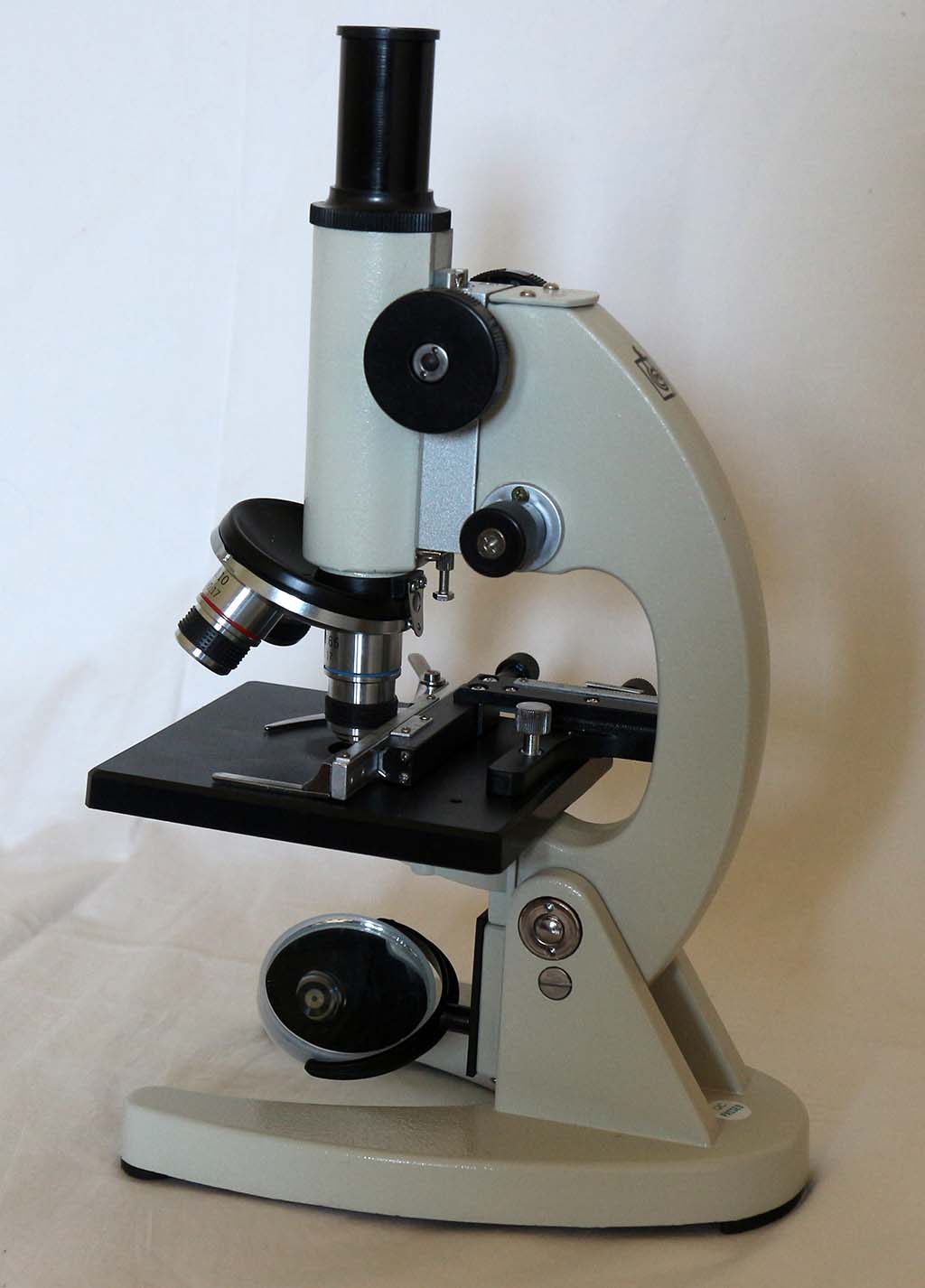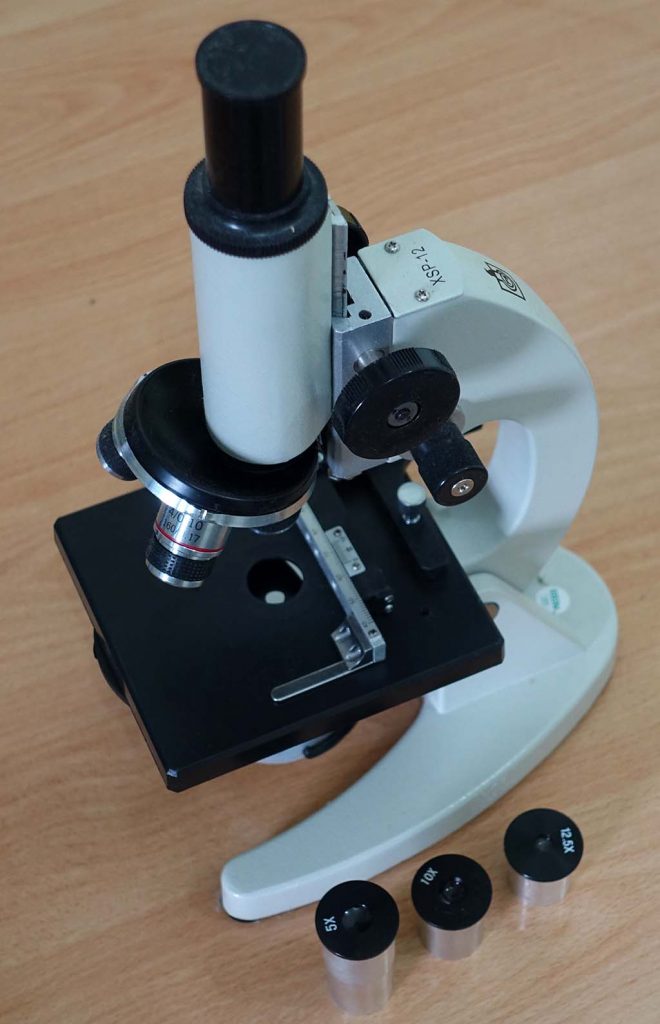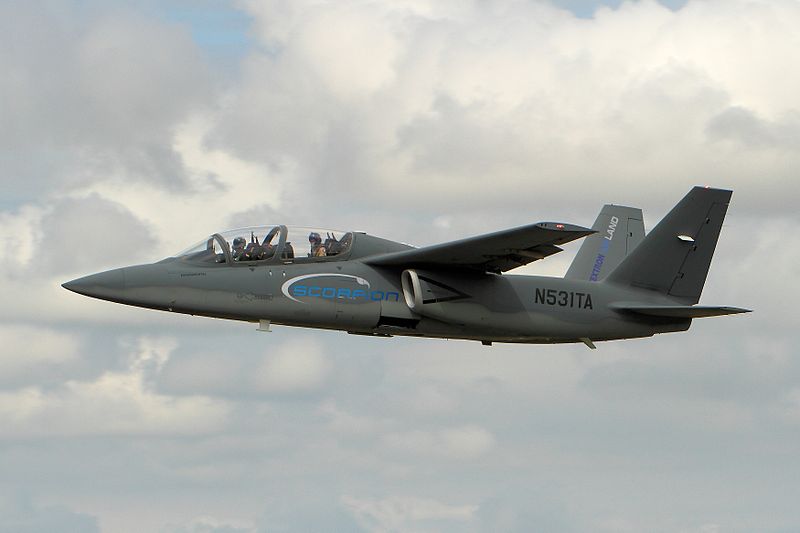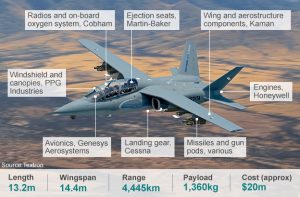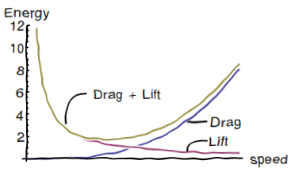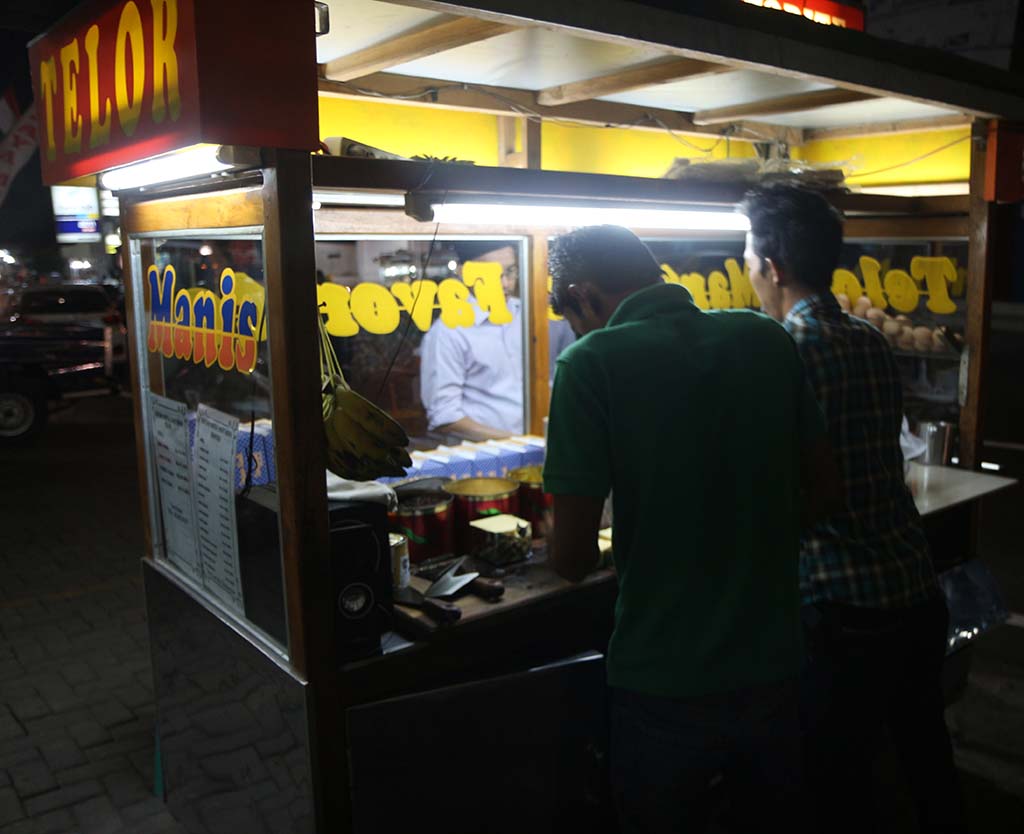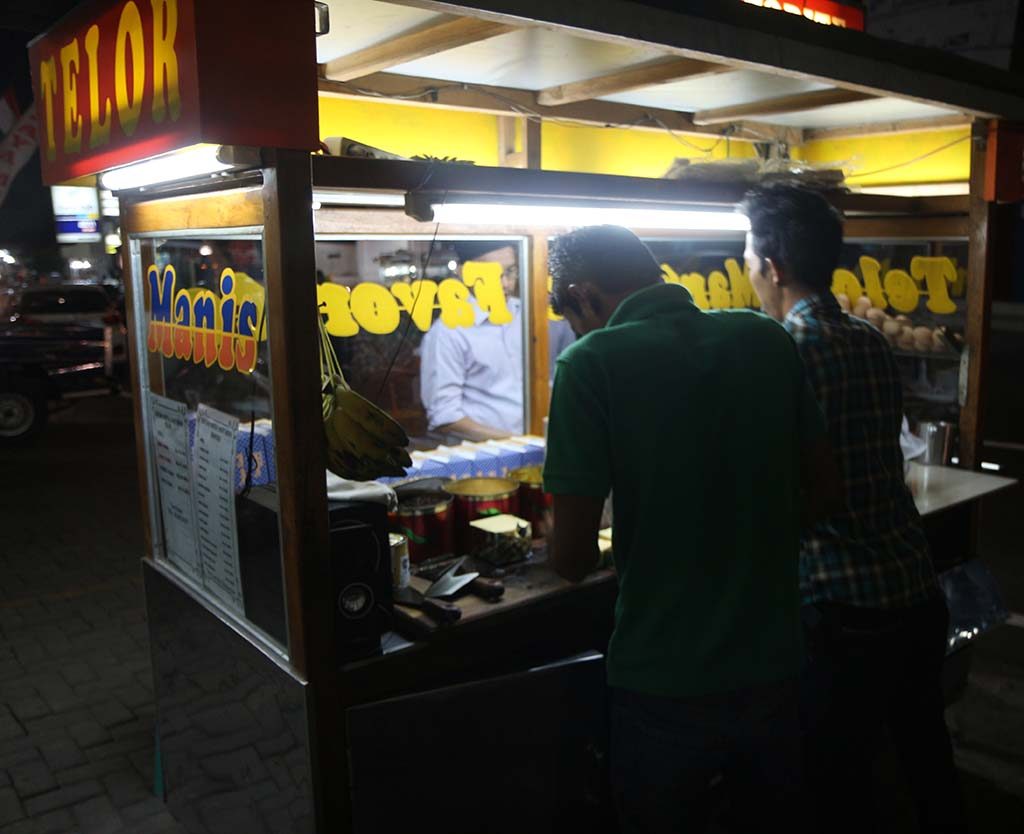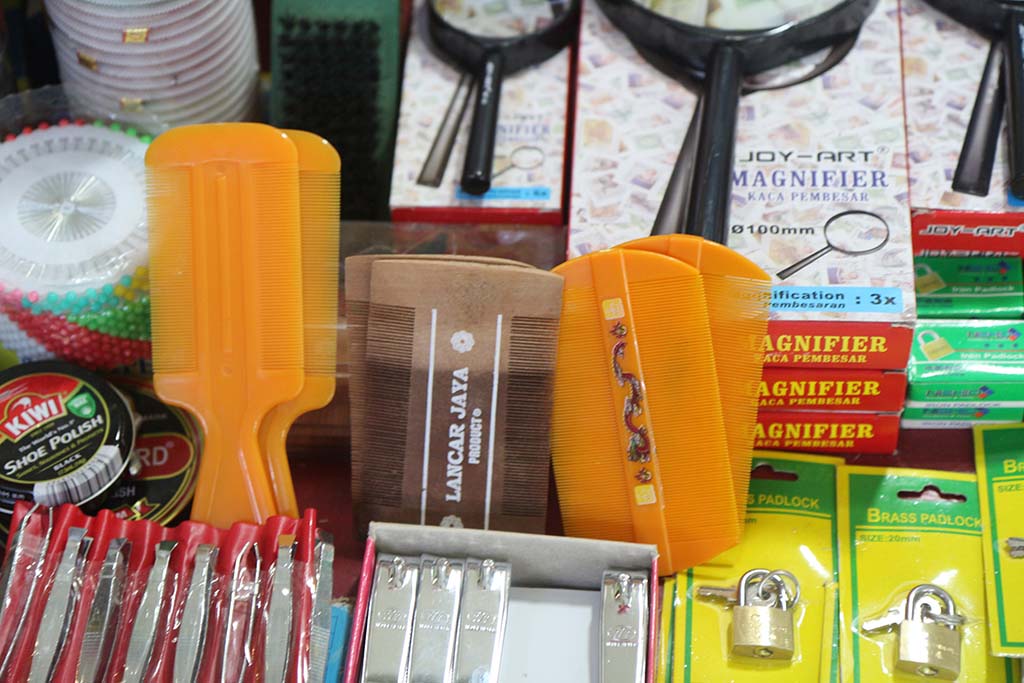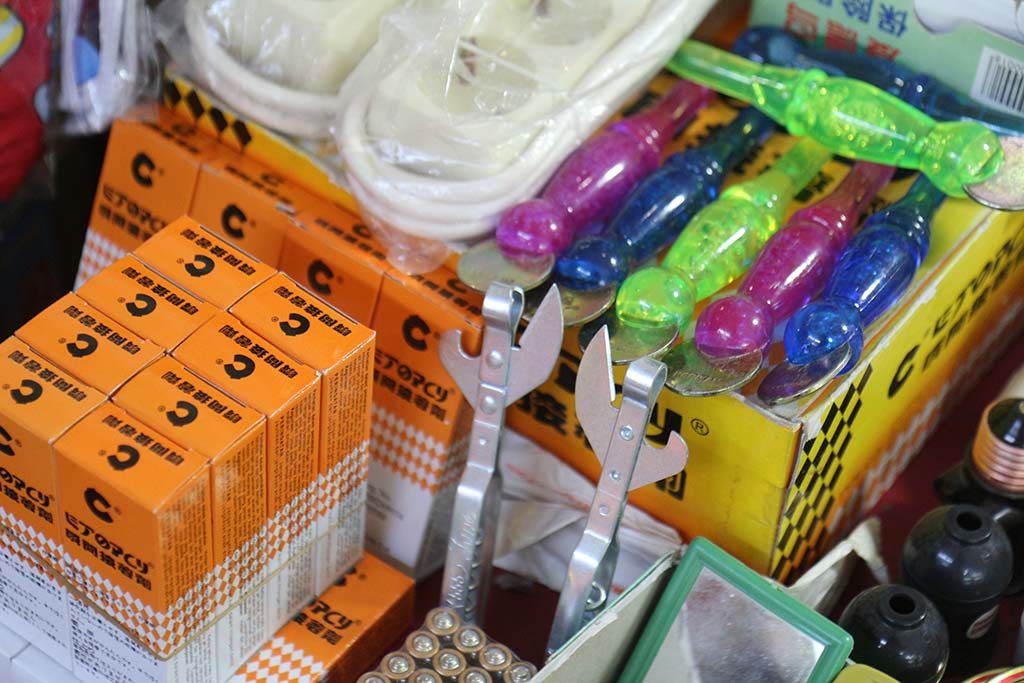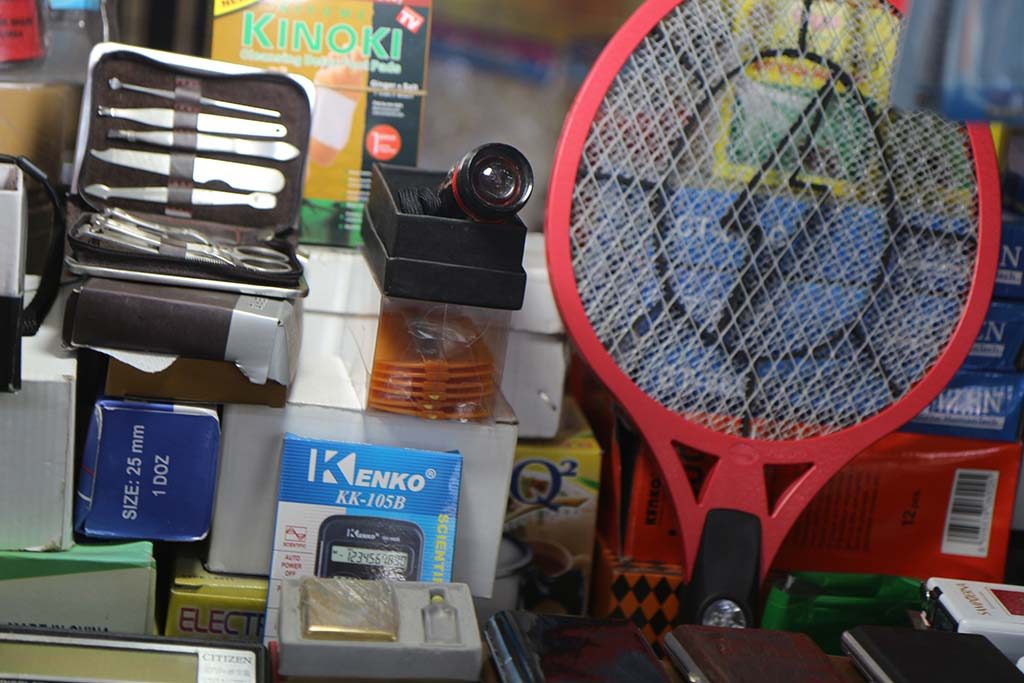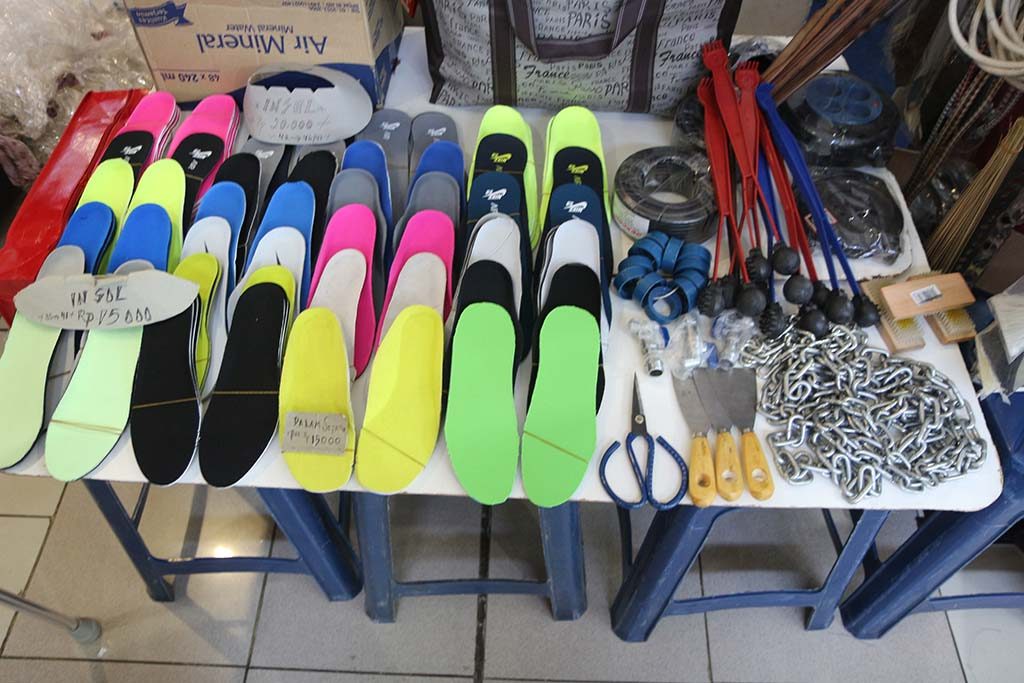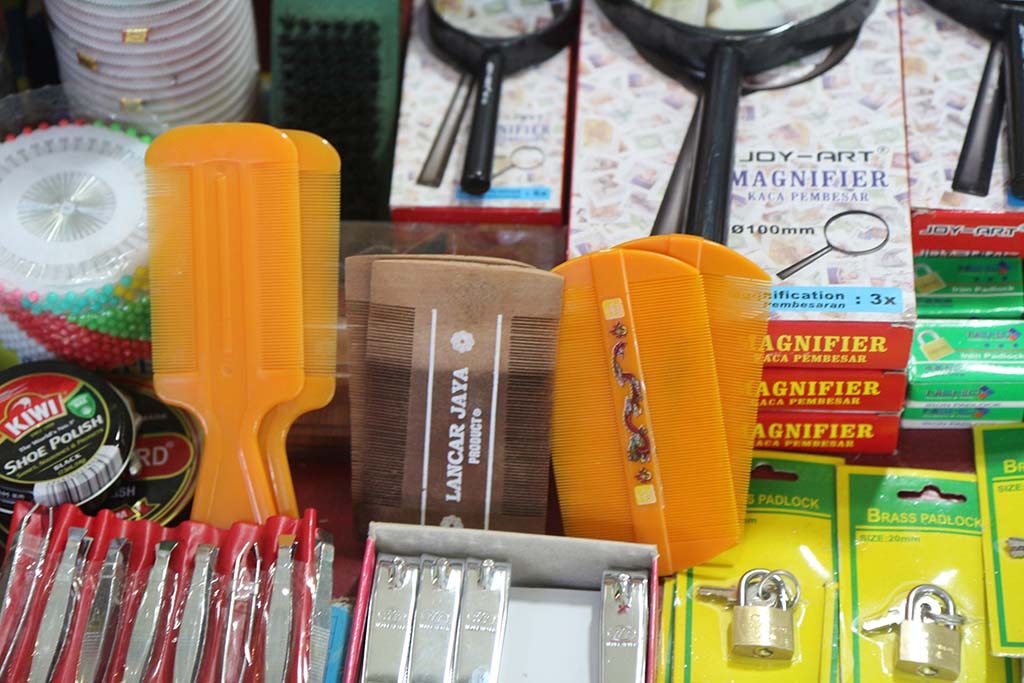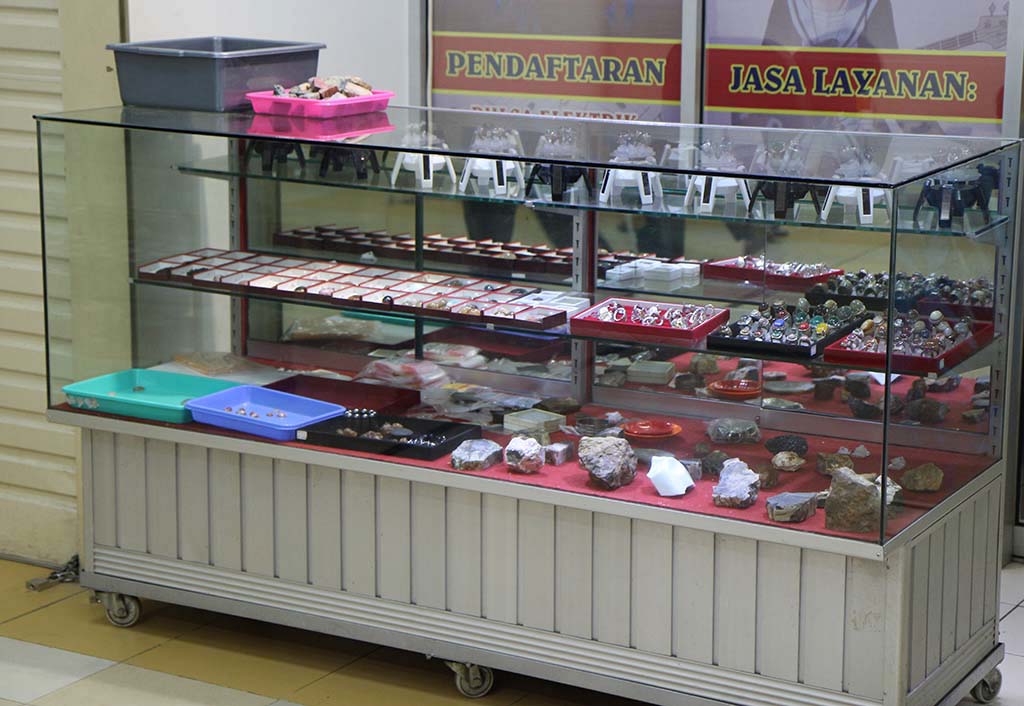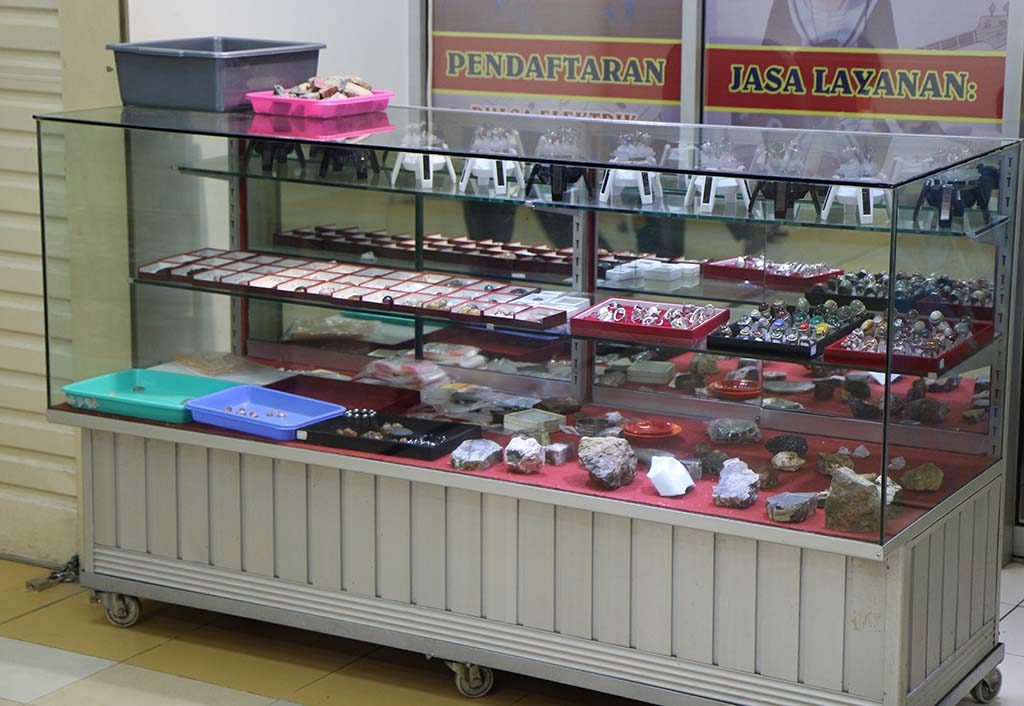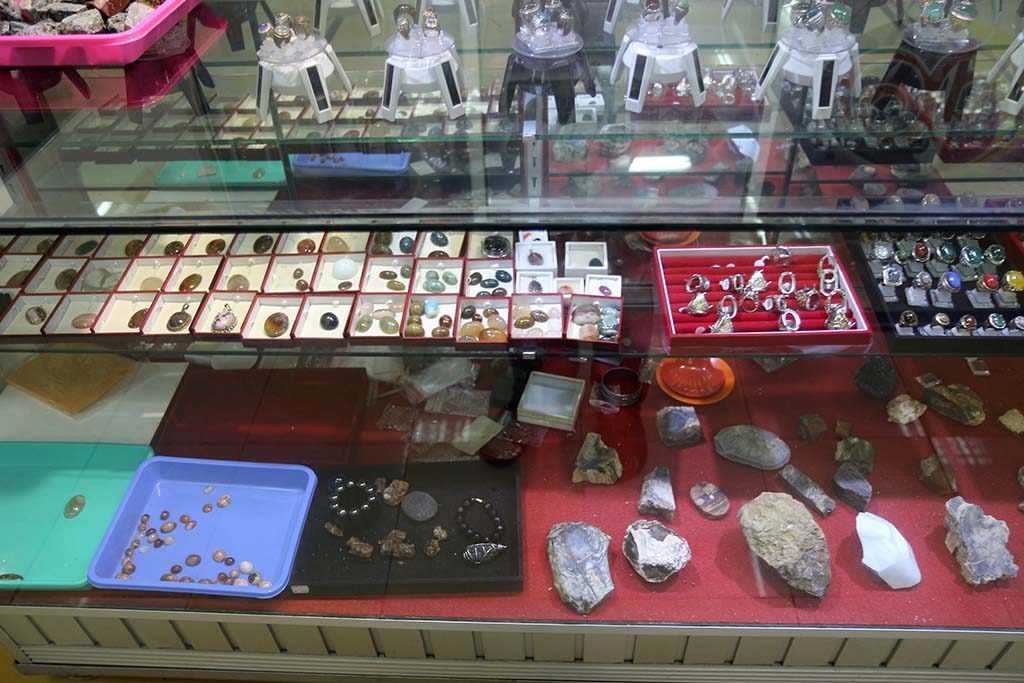Mikroskop stereo mode! BMK 36 dapat memberikan daerah pandangan yang luas dan gambar stereo yang realistis. Alat ini sesuai untuk penelitian atau pengajaran biologi, kedokteran, mineral, sediaan (seperti permata) dan juga berguna untuk perakitan dan pemeriksaan dari bagian-bagian yang memerlukan ketelitian.
1. Konstruksi

- Okuler
- Cincin dioptri
- Tabung kiri
- Objektif
- Meja kerja
- Tabung kanan
- Tombol pengunci
- Tombol pemfokus
- Badan Mikroskop
- Per penjepit
2. Spesifikasi
- Objektif : 2x
- Okuler :WF 10x
3. Pengoperasian
- Letakkan sediaan pada meja kerja mikroskop dan jepit dengan per
penjepit jika diperlukan. - Kendurkan tombol pengunci untuk memindahkan badan mikroskop ke atas atau ke bawah sampai mendekati jarak kerja yang sesuai. Kemudian kuncikanlah tombol itu.
- Putar tombol pemfokus untuk menggerakkan badan mikroskop ke atas atau ke bawah untuk mendapatkan bayangan yang jelas pada mata kanan, kemudian putar cincin dioptri pada tabung sebelah kiri untuk menjadikan bayangan pada mata kiri menjadi jelas dan fokus (sambil menutup mata kanan). Kemudian lihatlah dengan kedua mata untuk mendapatkan gambar stereo yang realistis.
4. Perawatan
- Setelah selesai digunakan, bersihkan meja kerja dengan lap kain.
- Tombol harus dilonggarkan untuk menurunkan badan mikroskop ke posisi terendah.
- Mikroskop harus disimpan di tempat yang kering dan bersih, bebas dari asam dan basa untuk menghindari kerusakan.
- Jangan mencoba membongkar mikroskop sendiri.
- Hindarkan mikroskop dari benturan.

